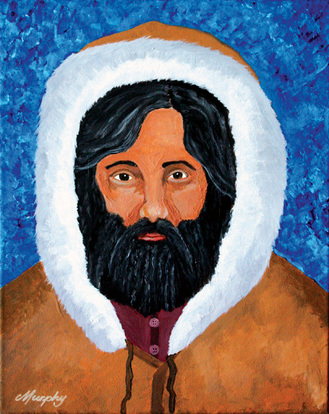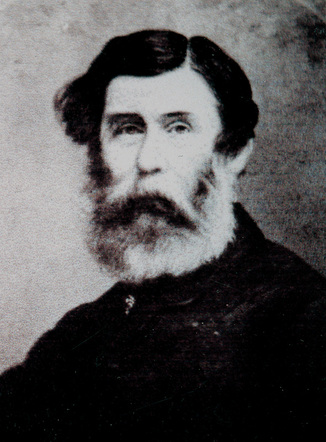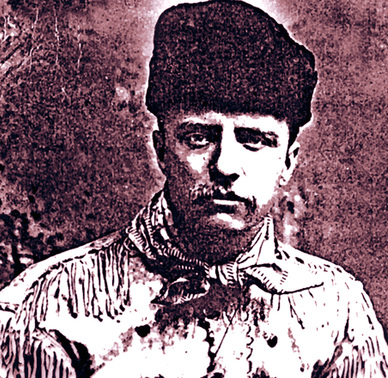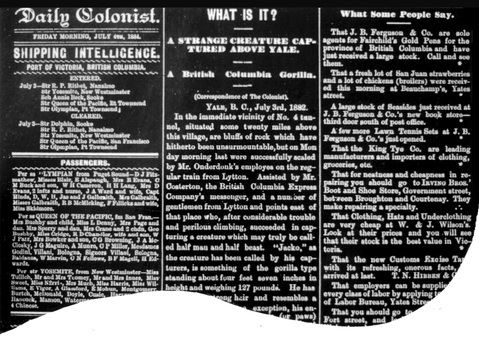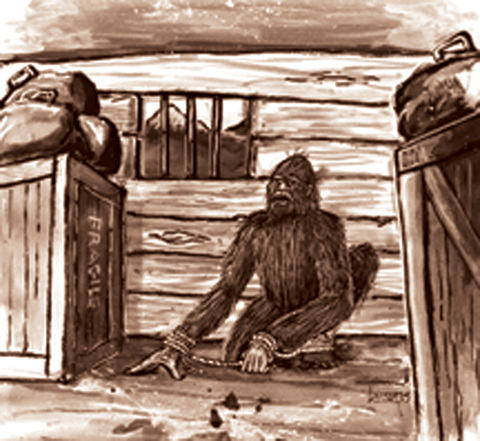EARLY WRITTEN RECORD GALLERY
|
The first major explorer to see something unusual was David Thompson (1770-1857). Thompson was a cartographer and trekked all over Canada making maps. He saw large, unusual, four-toed clawed footprints near what is now Jasper, Alberta. I think four toes might be justified as sometimes the little toe may not make enough of an impression to be noticed. However, I have difficulty with the claws with regard to sasquatch. Whatever the case, his Native guides insisted that the tracks were not made by a bear. Thompson does not state that the tracks indicated a creature with two or four legs, but if it were the latter, then I don’t think he would have been so intrigued with the tracks. The next great adventurer was Paul Kane (1810-1871). Kane was an artist and walked all over North America sketching Native people and scenery. His artwork is beyond astounding, and his book, The Wanderings of an Artist Among the Indians of North America, is likely among the best books anyone will read who is interested in Native culture and general life in the early wilderness. On March 26, 1847 Kane arrived at Mount St. Helens, Washington. He was told by Native people that the mountain was inhabited by a race of beings of a different species, and who were cannibals. They called the creatures, “Skoocooms.” Kane offered a considerable bribe to any Native who would accompany him in an exploration of the mountain, but none came forward. Mount St. Helens would later become highly associated with sasquatch-related incidents. The first photograph of what is believed to be a sasquatch footprint was taken there (below Spirit Lake) on October 30, 1930. (See “More Info” for the Footprint Gallery.) Finally, we have Theodore Roosevelt (1859-1919) who became President of
the United States. In his book, The Wilderness Hunter, he relates a story in considerable detail told to him by the partner of a trapper who was murdered by a strange “beast-creature” that walked on two legs. The creature was not seen, just its large footprints. The incident occurred in about the late 1850s in the Bitterroot Mountains (Idaho-Montana border). Roosevelt also tells in other writings of very strange and freighting sounds in the forest that did not seem to belong to known animals. |
|
Drawing by Duncan Hopkins done at my request that shows “Jacko” bound in a
train boxcar. We are told in the newspaper article that this actually happened. |
There are hundreds of newspaper reports on incidents involving what could be the sasquatch. Prior to
1925, when the word “sasquatch” was effectively coined, there was no “standard” English word for the creature. Nevertheless, what reporters describe as the “thing” that was seen often matches what we believe is a sasquatch. In the “More Info” facility I have provided what I believe are most reports from the earliest times to 1899. All reports, regardless of the source (newspaper, book, magazine) are provided. Also, I have included the reports of what are obviously “wild men” (men gone wild) and reports of yeti sightings. The first illustration shown here is a part of the actual 1884 newspaper article (center column) that covered the “Jacko” story --an account of an alleged ape-boy captured near Yale, BC that year. This is likely the most well-known early newspaper report on a sasquatch. Although most researchers have concluded that the incident was a hoax, there remains some intriguing facts about the case that might indicate the capture did indeed take place. A booklet I authored in association with Barry Blount entitled, Yale & the Strange Story of Jacko the Ape-boy (2011), is the result of an intensive study of the incident. The booklet is available from Hancock House Publishers. |
Gallery Navigation
All images in this presentation are from the Murphy/Hancock Photo Library or other restricted sources and are under copyright where applicable.
Please contact <[email protected]> for details on usage.


